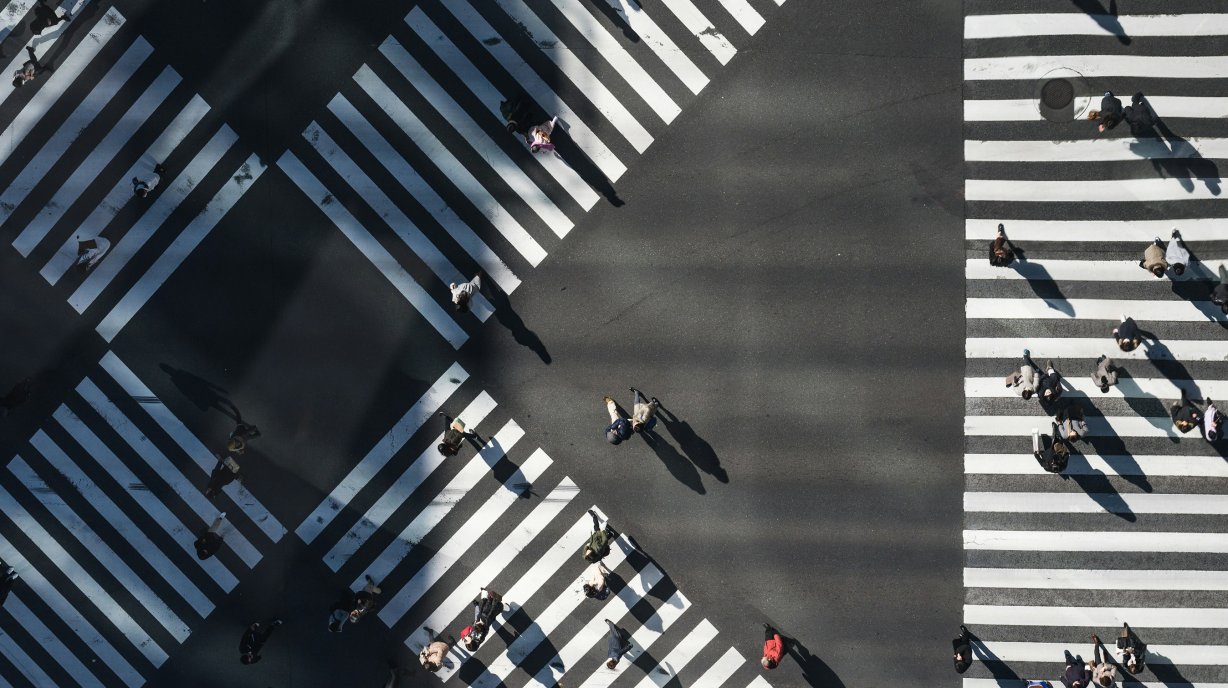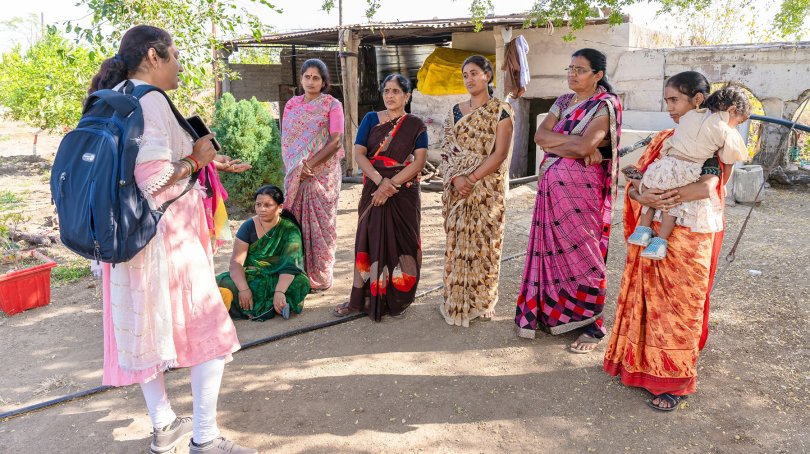
Growth and crisis

Pedestrian crossings from the sky © Photo by Ryoji Iwata on Unsplash
March 2019, Paris region. Two men are violently dragged out of a van and beaten. The cause: a rumour spread on social media, claiming that “white vans” were kidnapping children. Analysis of social media can help us to understand how such rumours spread: distinguishing between the target and the source within the network can contribute to a better understanding of how such information can be disseminated, according to the results of a recent theoretical study.
As digital social networks increasingly shape how we behave, understanding their mechanics has become a major scientific challenge. The effort is not new, though: since the 20th century, the social sciences have used graph theory to model relationships between individuals. With the rise of computing in the 1970s, complex calculations became feasible and these analyses gained new momentum.
Countless systems, from international trade and the spread of viruses to, of course, social relationships between individuals, can be represented graphically as diagrams, in the form of ‘nodes’ connected by ‘links’.
In the social sciences, network analysis makes it possible to explain behaviour not just by individual characteristics - age, class, gender - but by a person’s position in their network. In 1974, for example, American sociologist Mark Granovetter showed the importance of personal ties in job search strategies1. This finding highlights the nuances in typical labour-market analyses and helps explain why, with the same qualifications, some people struggle more to find work because they do not have access to the requisite networks. Understanding how information circulates in a network is therefore essential to many social and economic policies.
Granovetter, Mark. Getting a Job: A Study of Contacts and Careers. Harvard University Press, 1974

©Photo by Marek Piwnicki on Pexels
In 2013, a team of four economists - including future Nobel laureates Esther Duflo and Abhijit Banerjee published a major study on the rollout of microcredit2 -which lends small sums to people excluded from traditional banking or reliant on usurious loans. The aim is to boost productive activities and living conditions. In 2006, the microfinance organization Bharatha Swamukti Samsthe (BSS) launched a microcredit program in about a hundred rural villages in Karnataka, southwest India. Because the teams could not knock on every door, BSS took a familiar approach: in each village, inform the person deemed most influential - a teacher, a village chief, a shopkeeper - who would then convene local meetings with nearby farmers to publicise the program.
Banerjee A., Duflo E., Chandrasekhar A.G., Jackson M.O., 2013 “The Diffusion of Microfinance” Science Magazine, Vol. 341, no. 6144.
Was reliance on influential figures the most effective choice? To find out, the four economists analysed which network “nodes” were most effective in driving adoption. They first conducted a detailed survey of individual characteristics and mapped relationships before the program began, then proceeded to track the ways in which the adoption of microcredit spread. They found that someone who had adopted the program was seven times more likely to inform others about it. In addition, information passed along by non-participants was crucial: because they were numerous, they accounted for about a third of new enrolments. Finally, relationships with those who had borrowed via a microfinance programme influenced an individual’s decision to adopt - but only by way of the information received through the network.

©Photo by Equalstock on Unsplash
This empirical work led the team to coin the term diffusion centrality: an individual’s capacity to spread a practice through their network over a given period. It captures not only direct connections (measured as ‘degrees’ of connection) but also the ability to reach beyond one’s immediate contacts – the indirect influence. In this case, high diffusion centrality was the best predictor of others’ adoption. In other words, BSS would have done better to rely not on the most visible figures, but on those with the highest diffusion centrality.
In 2019, economists Yann Bramoullé and Garance Génicot revisited the analysis from a deeper theoretical viewpoint. They clarified what was meant by ‘retransmission’: who relays information, and when. Notably, in the Banerjee et al. model, a person transmits as many times as they receive a message - yet in practice, it would be odd to tell your neighbour something twice simply because you had heard the information twice yourself. By incorporating the message’s diffusion history, Bramoullé and Génicot show that other notions beyond diffusion centrality can come into play.

© Photo by NOBU on Adobe Stock
The researchers also distinguish between senders and targets. In the diffusion‑centrality framework, everyone both receives and retransmits. In real life, however, the initial sender or the target may behave differently. If you are the target of a harassment campaign, for example, you are unlikely to pass along the hateful messages you have read about yourself. In this case, you are a target, not a sender.
Does this asymmetry change how information spreads? To test this, the authors introduce the concept of targeting centrality: the influence an agent exerts when targets do not retransmit. They compare results with those from diffusion centrality and show that diffusion depends on context. When the probability of transmission between individuals is low, the two centralities are similarly weighted - the sender/target asymmetry has little effect. When transmission is high and diffusion time is effectively unbounded, the fact that a target does not retransmit profoundly alters the spread. The effect is stronger in networks with “bridges” - sub‑networks linked by isolated ties. In the BSS setting, for instance, imagine two villages connected only by a woman who moved to one but maintains ties with family in the other.
Under certain conditions, therefore, asymmetry in agents’ behaviour can be seen to strongly shape diffusion within networks. This perspective may help explain the dynamics of online harassment campaigns, and indeed, could perhaps point to strategies for addressing them.